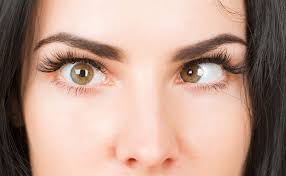SQUINT
Medically known as strabismus, squint is a very common Ophthalmological issue in which the eyes shows disturbed alignment.The affected eye does not sync with the focus and turn in either direction. The squint may show constant or intermediate effect on gaze.
Why does this happen:
The extra ocular muscles of eyes are responsible for eye movements, especially the eye ball. Interruption in working or either the muscles or the nerve supplying them results in the misalignment of gaze. In some cases it may be due to the underlying neurological problems that results in incoordination , an injury to cranial nerve, due to a refractive defect or may be an inherited defect. In cases of neurodevelopmental disorders like hydrocephalus or infections such as measles.
The alarming symptoms :
- It can be detected at a young age either since birth or in initial 6 months when one eye does not look straight to a greater extent,
- Cross eye phenomena can be marked in minors when they get tired.
- If child turns head while talking to someone in front while another eye is closed, it is an alarm. Go, see your doctor.
The squint as already discussed can present in multiple directions depending upon the cause:
- Exotropia: This presentation of eye ball can be called as divergent squint as the eye ball moves outward while focusing over an object.
- Exotropia,: In simplified version; converging squint where eye ball rotates inward while focusing straight.
- Hypertrophia : The word hyper itself explains the upward rotation of eyeball instead of getting fixed in front.
- Hypotropia : Hypo refers to downward rotation of eyeball when the brain try to get it straight.
Complications:
If untreated it lead to amblyopia, an eye defect where the brain avoids the optic signals from affected eye.
The squint corrected in young age may reappear at adult hood.
At times, a squint may worsen to land the brain to adapt with a double vision.
Treatment:
Squint used to be considered as a problem that could not be cured in older times; with advancements in medical field the treatment is possible by various approaches. Being most effective in younger age groups( less than 7 yrs), patients of all age groups can be treated for squint.
- Use of spectacles to correct the other optical defects such as myopia,hypermetropia thatmay be the root cause of squint.
- Postural correction, in case the squint is result of compensation to poor posture.
- Wearing an eye patch covering good eye to let the affected eye get aligned in cases of minor squint.
- Botox injections to weaken the tight muscle pulling the eyeball causing squint.
- Exercises of ocular muscles to get the eye ball in alignment.
- Surgery involving the release of tight extra ocular muscles , correcting the nerve damage , re- imposing the muscle affecting the alignment, changing the lens to correct refractive disorders.
- At times both eyes are treated surgically to restore the focus of optic pathway.
Dr. Birendra Jha is one of the best Squint specialist in Indore. They have many years experience of this field, If you are suffering from any eye disease and are looking for the best Cataract surgeon in Indore, then you should visit Indore India Eye Care, Clinic. Book an Appointment today with the best Eye surgeon in Indore call us 9977141260 for more information.
Online Book an Appointment today :- https://www.indoreindiaeyecare.com/contact-us.html
Please go through our social media :
like our page to know more about eyes
Facebook :- https://www.facebook.com/eyeclinicsinIndore/
Please do follow on Instagram
Instagram :- https://www.instagram.com/indoreindiaeyecare_/
To More Post: - Contact Lenses and Eye Infections




Comments
Post a Comment